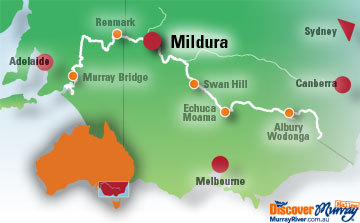
Mildura Riverfront Shared Path - Wetlands
What is a wetland?
A wetland is exactly what the name suggests: wet land. This covers a wide range of habitats, including lakes, lagoons, estuaries, rivers, floodplains, swamps, bogs, billabongs, marshes, coral reefs and seagrass beds. Wetlands can be fresh, brackish or saline.
However, an area doesn’t need to be permanently wet to qualify as a wetland. It just needs to be wet long enough for its plants and animals to be adapted to - or even dependent on - wet conditions for at least part of their life cycle.
Why are wetlands so important?
Wetlands are home to productive and diverse ecosystems. They provide essential breeding and feeding habitats for many kinds of organisms, waterbirds, fish, invertebrates, and plants. Of particular value is their role in absorbing, recycling and releasing nutrients and trapping sediment. In other words, they are natural filters which improve water quality. At the same time, excessive pollutants will degrade or destroy wetlands. Wetlands also increase the productivity of associated water and land ecosystems. They add to the diversity of the landscape and are a focus for a number of recreational activities.
Wetlands act as environmental buffer areas. During wet periods, they spread flood peaks and store floodwaters, releasing them gradually and thus mitigating the effects of flooding. During drought, they provide refuges for wildlife.
Many of the wetlands along the Murray River are recognised as important habitats and breeding grounds for migratory waterbird species. Australia is a signatory to certain international agreements, such as the 1974 Japan-Australia Migratory Birds Agreement (JAMBA) and the 1986 China-Australia Migratory Birds Agreement (CAMBA). Among other things, these agreements require that consideration be given to habitat conservation.
Threats to wetlands
The most significant threats to wetlands are a consequent of human activity and include:
- river regulation and water diversion;
- the introduction of pest plants and animals into wetland areas; and
- disturbance caused by changed land-use including urbanisation and agricultural developments.
Case Studies
Great Cormorant
(Phalacrocorax carbo)
The Great Cormorant is a large black, glossy bird, with some white on the flank, and yellow on the beak, face and throat. Its beak is thick with a hook on the end and serrations along the edge. They are found in river and wetland habitats, with nests most commonly being in trees over water. They feed on fish which they catch by diving from the water surface and are sometimes seen with their wings stretched out to dry.
Red-necked Stint
(Calidris ruficollis)
The Red-necked Stint is a very small and compact bird with a red neck and short legs. They are migratory wader, breeding in Siberia and Alaska during May/June and arriving in Australia in August/September, where they stay until March/April. They prefer saline wetlands, such as Lake Ranfurly and Mourquong. They forage in mud flats for food including seeds, insects, small invertebrates and plants.
Mildura Riverfront Shared Path
Published with permission of Mildura Rural City Council
Tell your friends you found this at murrayriver.com.au!
Copyright Discover Murray 2025. This site or any portion of this site must not be reproduced, duplicated, copied, sold, resold, or otherwise exploited for any commercial purpose that is not expressly permitted by DISCOVER MURRAY.






 Horizontal Festival 2025
Horizontal Festival 2025 The Australian Beach Boys Show
The Australian Beach Boys Show CANCELLED CASH AMERICAN RECORDINGS STARRING HENRY WAGONS
CANCELLED CASH AMERICAN RECORDINGS STARRING HENRY WAGONS One Night In Memphis - Presley, Orbison & Cash 2025
One Night In Memphis - Presley, Orbison & Cash 2025 Santana & The Doobie Brothers Tribute
Santana & The Doobie Brothers Tribute

